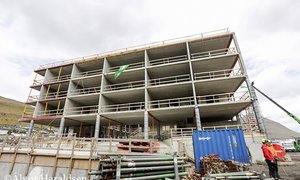The question is being asked 'why is Statoil remaining in the Faroes for hydrocarbon exploration after drilling two dry wells?' Statoil answers this on several fronts.
First it is a 30% partner in the exciting Rosebank-Lochnagar Field, discovered in late 2004 and currently undergoing a three well appraisal programme. As the latest press release indicates the field's third well (205/1-1) has just been tested and produced hydrocarbons at the rate of 6,000 barrels a day. In addition and importantly, the structure of the Rosebank-Lochnagar field is similar to large structures mapped by Statoil and its partners in the Faroes offshore. These constitute significant untested exploration potential in the Faroes.
In 2006 Statoil and its partners did drill the Brugdan prospect in the Faroes (well 6104/21-1); an analogous structure to Rosebank. The well was abandoned due to bottomhole problems and time constraints before the well had tested all its objectives. Despite this, the well has given positive indications for future exploration. Not least the well drilled a significant thickness of basalt without problems. This was because Statoil invested heavily in early research with drilling companies to improve the technology and drilling speeds required to drill a large thickness of basalt. This research program involved large pieces of Faroe lava being collected and delivered to the USA for drill testing.
Of course the drilling of Brugdan with its thick basalt cover could not have been attempted without the great success Statoil and its partners have achieved in geophysical sub-basalt imaging. This has taken painstaking research over several years but now the results allow Statoil to explore other basalt covered areas for potential hydrocarbon bearing structures in the Faroes offshore with much greater confidence.
Offshore wells allow us to get pinpoint data at specific locations. However in the Faroes offshore, an unexplored frontier area, a large area remains more speculative between these data points. To gain better insight to what these areas may contain, Statoil, Jardfeingi and other institutions are re-examining the geology of the Faroe Islands.
Finally, in early wells drilled in the Faroes offshore there were encountered small amounts of hydrocarbons. Together with radar, satellite and sea bed cores they suggest at depth an active hydrocarbon system . Therefore with only five wells drilled into the Faroes offshore area, four in a confined area close to the UK producing Foinaven-Schiehallion Fields, the exploration companies still need to investigate, research and understand the Faroes offshore hydrocarbon system. Where were hydrocarbons generated, when were they generated and where have they gone? Until we can answer these questions Statoil still will remain positive about future Faroes exploration. Further wells will be required and the drilling of the William Prospect by BP-Shell later this year will be another important milestone.














